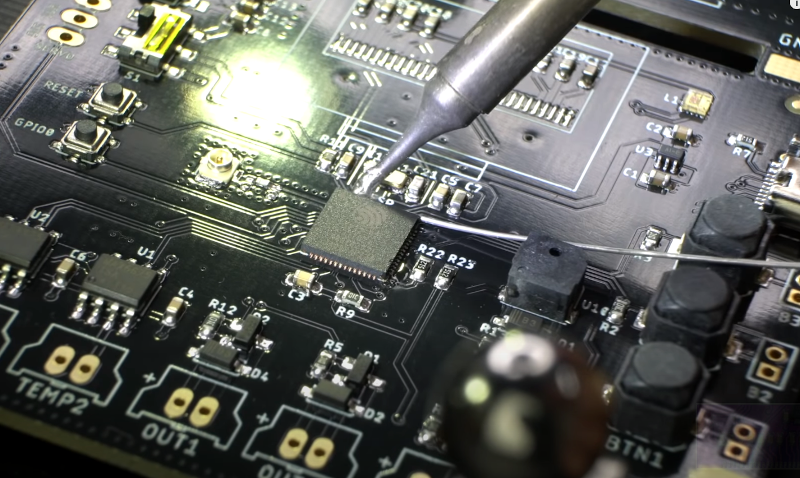[Maker.Moekoe] wanted a single controller board that was usable with different reflow ovens or hotplates. The result is a versatile board based on the ESP32-S2. You can see a video of the board’s assembly in the video below.
The board sports several inputs and outputs including:
- 2x MAX6675 thermocouple sensor input
- 2x Fan output with flyback diodes
- 2x Solid state relay output
- 3x Buttons
- 1x LED
- 1x Buzzer
- 1x Servo motor output
- 0.96 inch OLED display
You could probably find a use for the board for other similar applications, not just ovens.
The video is oddly relaxing, watching parts reflow. It is like watching a 3D printer, no matter how many times we see it, we still find it soothing to watch. You can also see how he integrated the board with a toaster oven.
Overall, the board looks great and the workmanship is also very good. If you’ve never seen anyone set heat-set threaded inserts into a 3D printed piece, be sure to watch around the four minute mark.
We’ve seen plenty of oven projects. You can even use an Easy Bake oven.
















WARNING: sound mute highly advised!
Sound mute MANDATORY for preservation of anything good in the world.
That’s a very nice build, good job!
Having had bad experiences with acrylic going brittle though I would love to see a follow up in a few years to know if those button fingers last or not.
Maybe polycarbonate with a U- resistant graphic overlay would be more durable.
*UV
At 4 minutes 59 seconds in they show a solid state relay, DMWD SSD-25 DA (Input 3-24 V DC ; load: 24-380 VAC , 25A) – Made in China.
All solid state relays will eventually fail, typically mode of failure is to short circuit. And the hotter all electronics operate the faster they will fail ( Arrhenius Equation – roughly translates to mean that the mean time between failure for electronic components is halved for every 10°C hotter that they operate ).
I did not see any additional safety features in the video, that will prevent this sucker from burning down the house when it eventually fails. I guess it is fine to kick it on and read a book while you wait and unplug it if you see smoke.
No mention about failure modes or safety on github, other than the risk of shock from the mains voltage.
It looks nice, and to be fair all relays will eventually fail, solid state or not.
Aren’t the heating elements in these sort of ovens temperature limited so the heating element itself will only go up to a certain temperature, so shouldn’t that mean if the relay fails then the oven will just get to it’s max temperature and stay there? If that isn’t the case then it does really need some extra safety features because the only way you will know the relay has failed is when it doesn’t stop heating or you see smoke.
For my hotplate I am building I am using a 260 C PTC so even if it is powered straight from mains it will heat to 260 C and won’t go any higher so when the SSR fails it shouldnt cause any safety issues other than the hotplate will go to 260 C and stay there rather than being temperature controlled.
Most of these ovens have a bi-metallic cutout for safety. I think that is seen at 4:51 with blue wires. I think the SSR should have some kind of heat sink though.
It should be noted that these convection ovens have very different thermal time constants at the PCB than at the temperature sensing device (unless you attach the temperature sensor to the PCB). This can provide the illusion that you have reached reflow temperature on the PCB when, in fact, only the (air probing) thermocouple has reached that temperature). Since ‘time above liquidus’ tends to be rigorously specified by part makers (i.e. ‘do not exceed 20 seconds), this isn’t a time interval that you want to set larger than necessary, while making sure it’s long enough on the PCB itself to reliably reflow everything.
Maybe thats why it has two inputs for thermocouples, one to measure air or heating element temperature and the other the measure PCB temperature.
Typically, the sensor is attached to a piece of FR4 (or other suitable PCB material). That technique seems to regularly be rediscovered by reflow oven builders.
Is there a good how to on flashing the firmware for those of us not proficient in platformio?